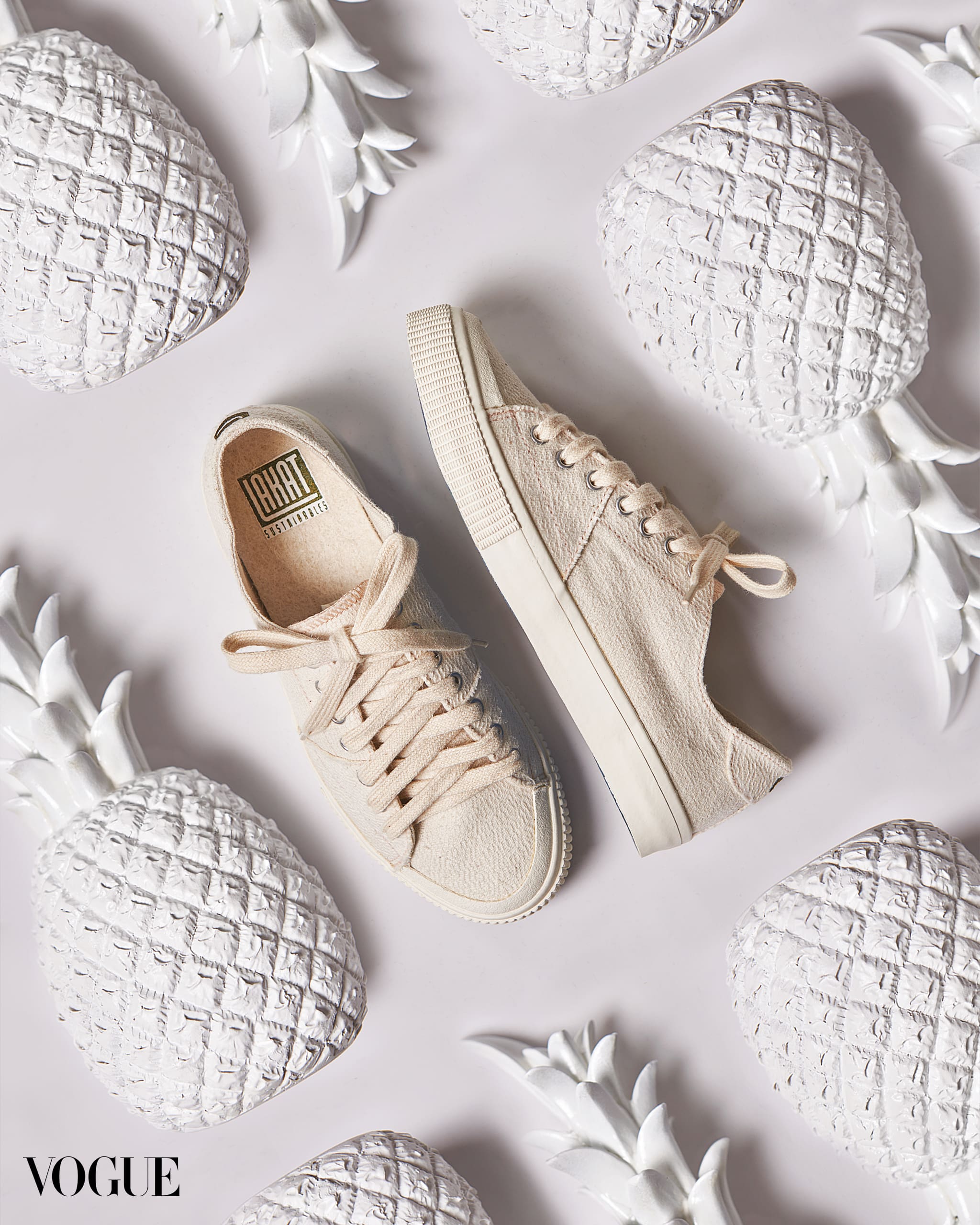Kieran Punay
At the helm of eco-footwear brand Lakat Sustainables are Mike and Banj Claparols, purveyors of the country’s lush fiber industry.
It’s apparent that couple Mike and Banj Claparols have a compelling bond: within five minutes of our Zoom call, they’re poking fun at each other’s responses and finishing each other’s sentences. It’s this deep-seated connection that has allowed them to effectively materialize their conviction of empowering the local craft industry.
Concrete plans to achieve this goal didn’t take shape until 2017. A series of what the couple calls “foundation events” that occurred that year were what led them to a fascinating hypothesis: if they introduce wearable pineapple to the local market, then they can open doors for other Philippine tropical fibers in the international scene.
The Claparolses wanted to revitalize the lifespan of a plant so locally abundant and ordinary that its leaves are usually discarded and fed to carabaos. The duo wasn’t referring to the red Spanish pineapples that make up piña fabric used for the barong, a formal shirt and one of the country’s emblematic national dresses. Their sights were set on yellow Smooth Cayenne and Queen pineapples—the zesty centerpiece at many Filipino dining tables, and the fruit so loved in Philippine culture that it merited its own mythical origin story, which is one of, if not the most, popular legends to date.

Such was the genesis of Lakat Sustainables, their eco-footwear venture launched in 2021. In Hiligaynon, a language spoken in Negros (an island south of Manila where Mike hails from), “lakat” means “to walk” or “to go.” What sets their label apart from other sneaker brands is their shoes’ sustainable composition. Lakat’s shoes are primarily made of pineapple-cotton yarns sourced from the island of Negros, with the soles composed of natural rubber farmed in Mindanao and mixed with fiber scraps that were discarded during the yarn spinning process.
The nascent shoe line was heavily influenced by their inclination towards Negrenese craftsmanship. The duo decided to focus on a single geographical area, because it allows them to champion sustainable relationships with each of their collaborators.
When they think of their weavers, the Claparolses see the community’s needs. This viewpoint is impossible when jumping from one community, project, or place to another; for partnerships to truly endure, empathic, laser-sharp concentration is necessary. “When we focus,” Mike tells Vogue Philippines, “we can serve them better.”
This is likely why the Claparolses’ approach to manufacturing and overall business operations remain close to the ground, despite their global-forward vision. They’ve always insisted on being present every step of the way. For instance, many brands may easily claim that their fabrics are more valuable than others, but Mike and Banj can actually explain why. “We studied weaving!” Banj laughs. They learned through a short practical course conducted by the Department of Science and Technology-Philippine Textile Research Institute. It was one of the first things they did to jumpstart the business, an absolutely integral exercise that has allowed them a more extensive knowledge and appreciation for the rigorous craft they employ.
On top of that, it prompted Mike to carefully consider the skill level, hardship level, and cultural level so that their proposition to buyers would be justly studied. “Those elements are priceless,” he points out. “Skills, for me, that should be protected.” The pair admits that the government and our locally available tech have a long way to go. But in true Claparolses fashion, they’ve gone ahead and planted a vision.
In the future, they hope for the establishment of a DOST-PTRI facility in Negros, so that majority of their production processes can be centralized. This will enable them to cut down on costs and emissions caused by the transportation of fibers from Negros to Manila for spinning and dyeing, then again to Negros for weaving, and finally back north to Rizal for assembly. It will minimize their carbon footprint while simultaneously producing jobs for the residents there. Mike is excited by the mere prospect. He smiles, claiming this early on that he and Banj will be the facility’s number one customers.
This article originally appeared in Vogue Philippines’ October 2022 Issue. Subscribe here.
